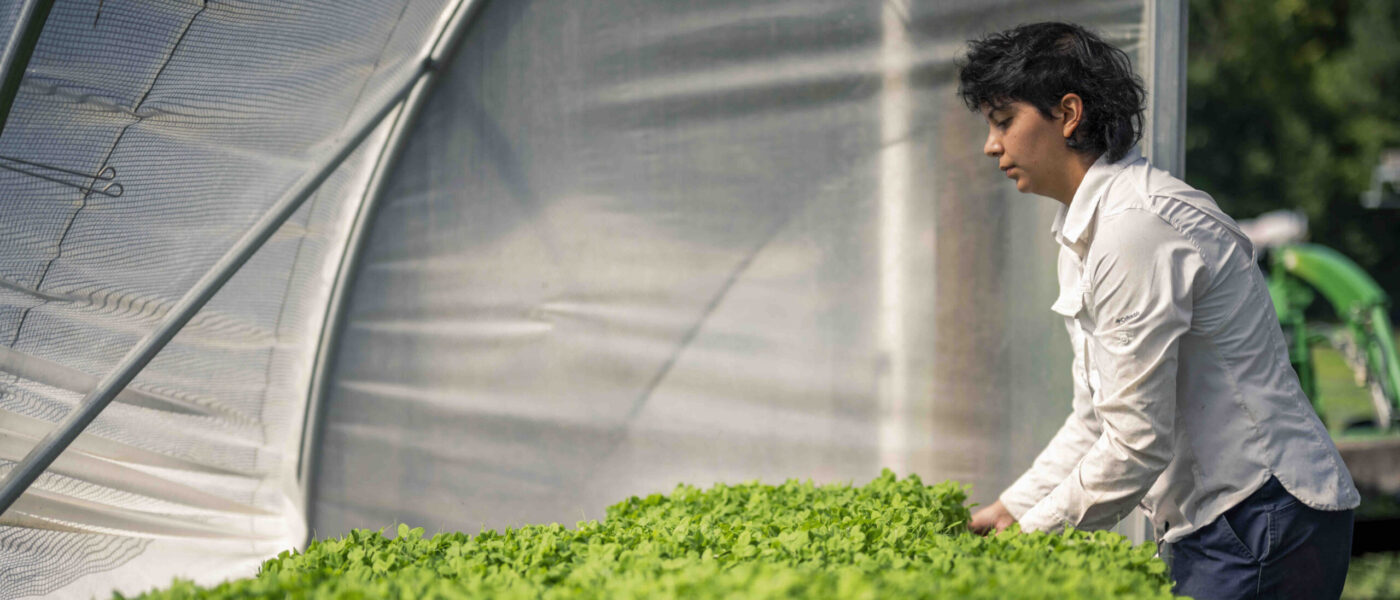July 2010
Here at Farm Aid, we receive many questions from individuals wanting to know how they can help farmers close to home. Others want to know how to advocate for local and regional food systems in their communities. Still others are concerned that family farmers are being overlooked as policymakers aim to fix our economy.
In a time of great need in our nation, we created a new report, Rebuilding America’s Economy with Family Farm-Centered Food Systems, to respond to these concerns and call for revitalization of our national economy through an investment in family farmers. Below is an introduction to the report, which we hope you find informative, helpful, and inspirational.
We’ve all been rocked by the economic stories dominating headlines the last few years: Banks that were “too big to fail” in utter failure and needing bailouts. The mortgage crisis. A tanked auto industry, leading to yet another bailout. Nail-bitingly high unemployment rates. Skyrocketing healthcare costs. Trillions of dollars of debt that plague our nation with no clear end in sight. The picture, in short, has been pretty bleak.
“Now is the time for our country to recognize and call on family farmers’ ingenuity, strength and value to our past and our future. We can have strong local economies, green energy, a clean environment, healthy citizens and good food—all of these start with family farmers.”
— Willie Nelson, Farm Aid President
As federal lawmakers spent billions attempting to stitch our economy back together, we at Farm Aid called attention to a critical source of hope and prosperity for our country: our nation’s family farmers and ranchers.
As Farm Aid President Willie Nelson has always said, family farmers are the backbone of the nation and the first rung of our economic ladder. When family farmers thrive, Main Streets thrive. With Willie’s inspiration, we authored our new report, Rebuilding America’s Economy with Family Farm-Centered Food Systems, as a call to action for investing in family farmers to jumpstart the country’s fragile economy.
We found ourselves drafting this report at a critical crossroads. The very farmers and ranchers best positioned to turn our economy around are the same ones most threatened by trends of corporate consolidation and industrialization in agriculture. Hence, the report begins by recounting the true costs of our industrial food system to rural economies and communities, and the ripple effects felt when we lose our family farmers and ranchers from the land. It makes clear that the industrial food system has drained health and wealth from our economy and done little to support the majority of our country’s family farmers and ranchers.
The heart of the report outlines a new vision for agriculture—what we call family farm-centered food systems that spur wealth creation and job growth for our local and regional economies and deliver fresh, healthful food to community members. By capturing some of the best research modeling the impacts of these new food systems, it highlights the untapped potential of America’s family farmers to rebuild our nation’s economy.
Case in point? The state of Illinois recently found that a 20% increase in local food production, processing and purchasing would generate $20-$30 billion in new economic activity for the state, including thousands of jobs! Examples like this beg for our attention as we consider how to give our economy an abrupt about-face.
Rebuilding America’s Economy with Family Farm-Centered Food Systems also showcases what we callStories from the Field, the tales of trailblazers who are already investing in family farmers and leveraging their hard work to transform communities across the country. Consider the story of Woodbury County, Iowa, whose economy was built upon corporate agribusiness and industrial agriculture, particularly the meatpacking industry. When its Director of Rural Economic Development, Rob Marqusee, realized this model drained Woodbury County of $400 million each year, he crafted a visionary web of policies to promote small family farms and businesses that would re-localize and revitalize Woodbury’s economy. The success of his work has been making waves across the country. We are proud to highlight successes like this as inspiration to farmers, community members, businesses, organizations, and local and state governments seeking to create thriving local and regional food systems that will revitalize America’s economy.
This effort also incorporates a sister document, called Funding Opportunities for Investing in Family Farm-Centered Food Systems, that highlights pools of federal money that can be harnessed to make this vision a reality. Grants like the Speciality Crop Block Grant Program are tools to strengthen local and regional food systems by enhancing the competitiveness of fruit and vegetable production, supporting “buy local” programs, improving the efficiency of distribution systems, establishing grower cooperatives and much more! I encourage those interested in building prosperous food systems in their communities to check out this document as well.
At Farm Aid, we’ve been working hard to get this report into the hands of Congress, officials at USDA, food policy and economic development councils, and food and farm groups across the nation. At a time when we’re all scratching our heads and scraping for solutions to the country’s economic woes, family farmers—true innovators and entrepreneurs in our society—offer us real hope. As we reflect upon 25 years of standing up for family farmers, we hope you will join us in supporting food systems that work for farmers and eaters alike, and revitalize our economies locally, regionally and nationally.
Check out the report at www.farmaid.org/ES.

